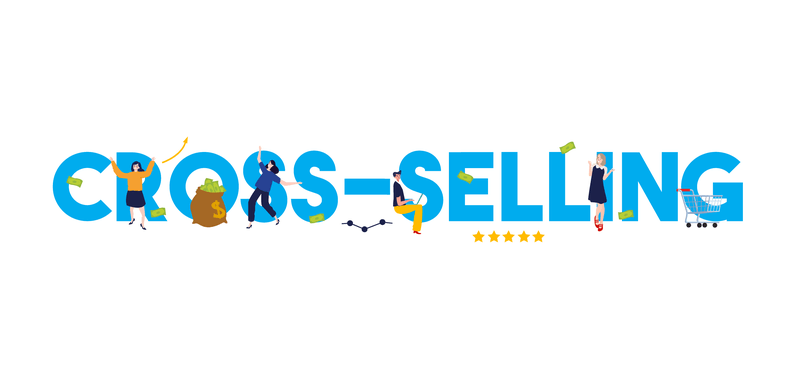What is cross-selling?
Cross-selling is a tactic through which businesses make more sales by suggesting an additional or complementary item to a customer who has already committed to a purchase. The best way to make sense of cross-selling is through the age-old but effective McDonald’s line: “would you like some fries to go with it?”
Cross-selling vs. upselling
Both upselling and cross-selling aim to increase the value of a purchase and improve the customer experience by giving them additional value each time they visit. Cross-selling focuses on promoting additional products with a purchase. In contrast, upselling is a practice that encourages the customer to buy the high-end version of the same product.
Here are the key differences between cross-selling and upselling:
- If the customer is purchasing a laptop and you’re using visual triggers on the page or in the checkout cart to suggest a keyboard, it is a cross-sell.
- If the customer is buying a laptop and you use visual prompts to recommend a higher-end model of the same device, it is an upsell.
Cross-selling in ecommerce
In ecommerce, cross-selling is one of the easiest and effective strategies to boost your sales. It introduces similar items to customers who are purchasing a product. When you imply it correctly, cross-selling adds a lot of value to each customer’s purchase and makes them feel like they ‘won.’
For example, if you run a store with custom stationery, you can suggest cartridges with fountain pens to enhance the customer experience. This way, you’re not only helping customers stock up on essentials but also showcasing the variety in your product catalog. Customers will be satisfied knowing that your store has everything they need when it comes to important stationery items.

Benefits of cross-selling
There are many benefits of cross-selling for ecommerce. While the main focus is to increase revenue, let’s not neglect the other advantages of using this tactic for your business.
Get larger orders
Just like McDonald’s has a higher profit margin for selling fries, many ecommerce stores enjoy a high-profit margin on cross-sells. By offering these items on the checkout page, you can increase your profits as well. One way to excite customers even more is to offer free or a flat shipping rate because if they agree to pay more for an item, they will be satisfied with the fact that shipping remains the same.
Improve customer experience
The key aim of cross-selling is to enhance the customer experience. By offering shoppers additional products or services, you should teach them ways to use their current product effectively. When you add value to the overall purchase, you will improve the customer experience and make more people happy.
Build loyalty
Those who develop a stronger connection with your brand are likely to continue doing business with you. In fact, these people might even become your brand ambassadors, spreading the word about your products to family and friends. When you offer not just one but multiple items a customer loves, you make them devoted to your brand and save money by bringing down your churn rates.
Move customers along the purchase path
As most marketers know, shoppers sometimes draw out buying decisions over long periods. They might think about whether or not they require the product, wait for a sale, or spend time hunting for the best price. Cross-selling can break the psychological barrier preventing them from making the purchase. With the right cross-selling strategy, you can give customers the boost they need to move through the buying journey, increasing their confidence to shop for all the things they need in one go.
How to cross-sell?
The first step of cross-selling is to identify products and services that will look great as complimentary offers. Like many other aspects of ecommerce, the timing and position of these items should be tested occasionally for maximum turnout. However, the most common technique is to apply cross-selling options on product pages, checkout pages, and follow-up email campaigns. Some cross-selling tactics include:
Bundling
Try packing items that are similar and go well together, like a digital camera, case, and tripod. The goal is to maximize profits and ensure that the customer knows they need all three items to use the camera correctly. To add an extra layer to entice your clients, offer bundle discounts that are hard to refuse.
Visual aids
More popular in fashion and lifestyle products, this tactic attracts customers who love accessorizing and won’t mind a little extra purchase. To cross-sell with visual aids, you need to present the products in an appealing way by using high-quality photography. The visual trigger should convince the customer to buy the whole package instead of one item. A common example of this tactic is the ‘Shop the Look’ section or ‘Shop the interior’ for interior design shops.
Customer journey integration
Cross-selling works when people are clearly considering a specific item. They may find it on the shopping basket page, the product information page, or in-between stages, such as after they’ve added products to their cart. Display some high-value products as cross-selling recommendations to motivate customers to shop from your store. However, never order cross-selling. Instead, use your analytics to identify where cross-selling is less effective or whether it is deterring customers.